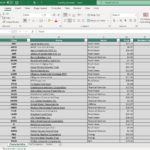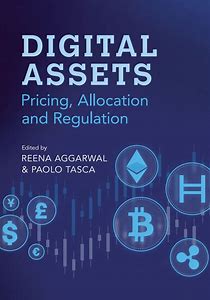How have different portfolio allocations performed throughout the world?
Amid recent market turbulence, the worst year ever for US bonds, persistent inflation, and the looming threat of slower growth or even recession, this is a critical question, especially given the current debate about the efficacy of the traditional 60/40 portfolio. To answer it, we evaluate the performance of portfolios with asset allocations of 100% equity, 100% bond, 60/40, and 80/20 in the US, UK, Italian, Swiss, and global markets over time on both a lumpsum and dollar-cost averaging (DCA) basis.
We chose these markets because they have widely available liquid instruments with which to execute our strategies as well as varying levels of volatility.
We build all of our hypothetical portfolios with exchange-traded funds (ETFs) except for the world bond allocation. We gathered close price data for the ETFs and net asset values for the global bond fund and reinvested/accumulated the dividends across our 10-year holding period from 31 December 2012 to 31 December 2022. Each country’s funds are priced in local currency and the world funds in US dollars. The only Swiss bond ETF with 10 years of return history had a targeted maturity of 7 to 15 years.
Portfolio Strategy Components
We backtested and calculated each strategy’s annualized total return based on a 120,000 investment in the local currency. For the lumpsum approach, we invested the full 120,000 on 31 December 2012. For the DCA approach, we split the total investment into 1,000 local currency cash flows each month for 120 months, from 31 December 2012 to 31 December 2022.
We excluded transaction costs since they are likely to be small for the lumpsum strategy, and while presumably higher for the DCA method, they should not qualitatively affect our results.

Annualized Return Performance: Lumpsum vs. DCA
The annualized returns for the lumpsum approach in each country and the world portfolio, visualized in the graphic below, demonstrate that only the 100% US equity portfolio fared better than the 100% global equity portfolio, while the 100% bond portfolios of all four countries beat their world counterpart. Each 80/20 allocation generated higher returns than its same-market 60/40 peer.
Lumpsum Annualized Returns

The US equity market displayed relatively high returns at the outset compared to those of the other three countries, and all US portfolios save the 100% bond allocation performed well. But these results come with a big caveat: They depend on our precise 10-year timeframe and cannot be generalized out of sample. Further, not all investors, whether retail or institutional, follow a lumpsum approach in the accumulation phase. This is why we conducted our DCA analysis.
How did the DCA strategy perform in comparison? All four country markets show similar trends, as depicted in the following graphic: All 100% bond allocations had negative annualized returns. Only 100% US equity outperformed 100% world equity. As with the lumpsum analysis, 80/20 outpaced 60/40 portfolios.
Dollar-Cost Averaging Annualized Returns

Comparing Holding Periods
To isolate the impact of dismal 2022 bond returns, we ended the holding period on 31 December 2021 instead of 31 December 2022 and reduced our investment amount to 108,000 from 120,000. This increased annualized returns for bonds and equity across the board for the DCA approach. The 100% US equity strategy improved the most, generating 6.56% higher returns.
So how did the lumpsum strategy perform during both holding periods for a 100% equity allocation and a 100% bond allocation in each country? The subsequent graphic distills our results.
Lumpsum: 100% Equity vs. 100% Bond Portfolios

For comparison, the visualization below shows how the 60/40 and 80/20 allocations in each market fared over both time windows.
The equity and bond funds in each category and all 60/40 and 80/20 portfolios exhibited significantly higher returns when the holding period ended on 31 December 2021 rather than 31 December 2022.
Lumpsum: 60/40 vs. 80/20 Portfolios

Volatility
Using average monthly returns, we calculated each strategy’s standard deviation and multiplied it by the square root of 12 to annualize it. The standard deviations of the funds in each category increased in 2022 as equity and bond market volatility rose globally, as shown in the following table.
Standard Deviations
Italian equities demonstrate the most volatility and the UK and Swiss the least, while US equity volatility correlates closely with its world counterpart. The US and Swiss bond markets were the most stable.

Sharpe Ratios
To understand each strategy’s risk-adjusted returns, we calculated their Sharpe ratios. For the risk-free rate, we use the average 10-year treasury rate of the respective country as well as the average 10-year US Treasury rate for the global portfolios since they are US-dollar denominated. Our results over the two time samples, presented in the two subsequent charts, show that all Sharpe ratios are higher/better for the time period ending in 2021 except for the Italian 80/20 portfolio. This indicates that equity and bond markets did better globally on a risk-adjusted basis in 2021 than 2022.
Relative to the 100% world equity allocation, the US and Swiss varieties had higher Sharpe ratios and their UK and Italian peers lower ones over the two timeframes. The 100% bond allocations in all four countries exhibited higher Sharpe ratios than their global counterpart.
Sharpe Ratios through 2021
Sharpe Ratios through 2022
When the holding period ended in 2021, the 60/40 portfolios had higher Sharpe ratios than the 80/20s. At the year-end 2022, all 80/20 portfolios save Switzerland’s had higher Sharpe ratios. Since the risk-adjusted performance of bonds was worse than that of equities through this timeframe, allocating a higher percentage to bonds — 40% to only 20% — yielded poorer results.
The global 80/20 portfolio’s Sharpe ratio was higher than the 60/40’s in both time samples but especially in the one ending in 2022. The higher volatility, high-inflation, and rising interest rate environment of 2022 clearly sabotaged bond performance and played an outsized role in our results.

Looking Ahead
What are the takeaways from this analysis? First, the lumpsum method did well across all markets and portfolios that allocated to equity. Of course, such a method requires having a lumpsum to invest, and success hinges in part on market timing. Moreover, investors might be emotionally resistant to investing a lumpsum amid a market downturn. The DCA approach, on the other hand, smooths the effect of market fluctuations on the portfolio and thus reduces timing risk.
Based on the lumpsum Sharpe ratios, the 100% equity portfolio had the best risk-adjusted performance through 2022 in all markets save Italy. For the period ending 31 December 2021, the 60/40 allocation fared best on a risk-adjusted basis in each country but not globally. The 80/20 allocation did better than 100% equity and 100% bond allocations in some markets and worse in others. Overall, the bond disaster of 2022 dragged down annualized and risk-adjusted returns.
To draw further conclusions about the utility of the 60/40 portfolio versus the 80/20 or any other allocation strategy requires further research. Indeed, our colleagues are in the midst of conducting it. But as our analysis shows, a portfolio redeemed at year-end 2021 would have outperformed the same portfolio redeemed at year-end 2022. This is a good reminder of the risk of end-point bias in any time series analysis.
To be sure, our investigation has limitations beyond those mentioned above. It does not account for the impact of foreign currency conversions, exclusively focuses on developed markets, and has an abbreviated investing period. Nevertheless, it does provide a window into how different asset allocation strategies played out over the past decade and illustrates how the 60/40 portfolio can add to risk-adjusted returns and how outlier years can drag down performance.
Rhodri Preece, CFA, David Terris, CIPM, and Karyn D. Vincent, CFA, CIPM, contributed to this article.
If you liked this post, don’t forget to subscribe to Enterprising Investor.
All posts are the opinion of the author. As such, they should not be construed as investment advice, nor do the opinions expressed necessarily reflect the views of CFA Institute or the author’s employer.
Image credit: ©Getty Images / alexsl
Professional Learning for CFA Institute Members
CFA Institute members are empowered to self-determine and self-report professional learning (PL) credits earned, including content on Enterprising Investor. Members can record credits easily using their online PL tracker.



























